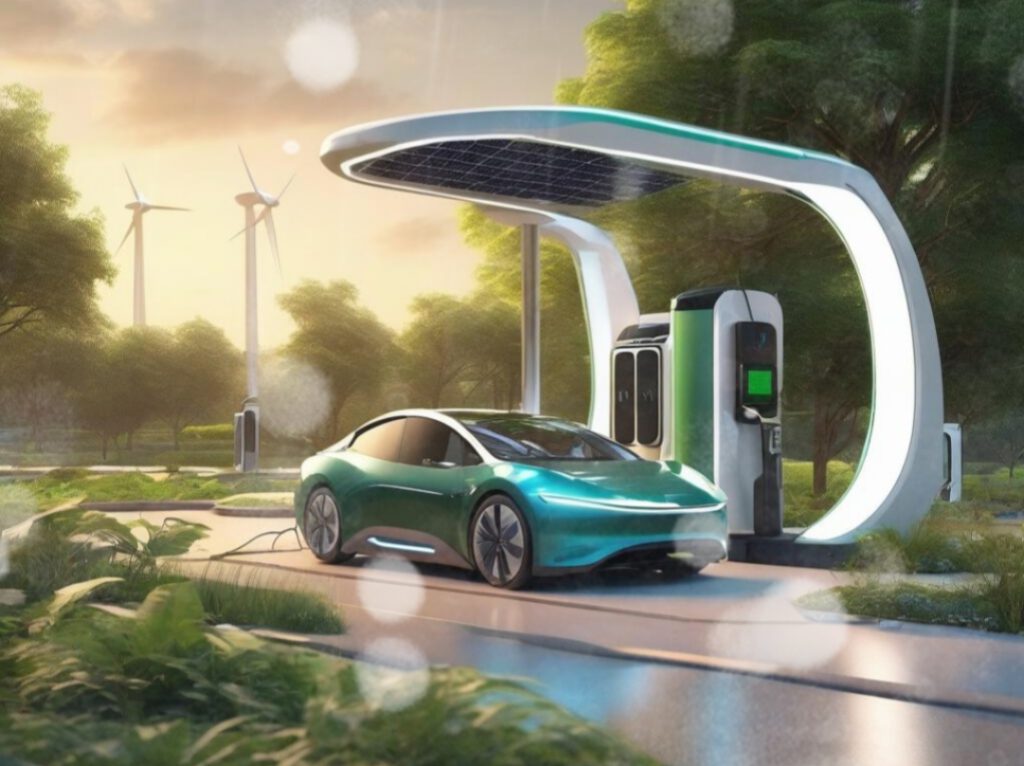If you have the slight suspicion that the aging vehicle in your garage may be lacking in reliability, many drivers consider whether it would not make more economic sense to invest in a new model. Typically, after 7 – 10 years, not only do the costs for repairs and regular maintenance increase for most brands, but also the likelihood of technical problems. Car breakdowns can have expensive consequences, not to mention unnecessary annoyances.
When deciding between advanced electromobility, hybrid solutions or classic combustion engines, your own environmental awareness naturally plays a significant role. If you value sustainability, an electric car is a more environmentally friendly alternative, as it does not cause direct CO2 emissions. At the same time, you should consider where the electricity comes from and how likely it is that governments will regulate the car trade more strictly in the future.
Electric cars are only more expensive at the beginning
A direct comparison shows the price difference. The new price for a Renault Zoe is around 30,000 euros, while the Renault Clio with similar equipment is currently up to 10812 dollars cheaper. The Zoe eliminates many of the maintenance costs that would otherwise have to be taken into account, as there are significantly fewer moving parts and the vehicle logically does not require an oil change or anything similar.
In addition to the Clio’s higher energy consumption, the electricity costs for charging in the context of electromobility are typically lower than the gas station prices for petrol or diesel. In the long term, the lower running costs make up for the initial difference. So would the electric car be an attractive option if you drive a lot, even though it is basically ideal for short distances and city traffic?
Not quite. For example, if you drive 248 miles per week and want to amortize the difference in the purchase price between the Renault Zoe and the Renault Clio through the savings in running costs, this will take around 128 months. The Clio currently costs around 39 dollars per week in fuel costs, while the Zoe only costs around 19 dollars per week, resulting in savings of around half per week. The information is without guarantee because consumption is influenced by individual driving behavior and price fluctuations.

The range of charging stations has increased
In many countries, especially in Germany, there is a well-developed network of public charging stations that include both alternating current (AC) and direct current (DC, for fast charging). If you charge an electric car at home using a photovoltaic system, you will need additional components. Prices vary depending on the manufacturer and performance.
1. Inverter (865 – 3244 dollars): This converts the direct current generated by the solar modules into alternating current.
2. Wallbox (324 – 1622 dollars): A powerful charging unit that enables faster and safer charging of your vehicle.
3. SEMS (541 – 2703 dollars): A management system helps to optimize energy consumption in the household and can control charging automatically.
4. Power storage (5406 – 16218 dollars): To use stored electricity at night or on cloudy days without sunlight.
Why is the sales market for electric cars stagnating
Despite falling costs for batteries, electromobility remains simply more expensive, which can deter potential buyers. In many (rural) regions, the network of charging stations is still insufficiently developed, long charging times dominate and there is uncertainty about the availability of charging options.
In many countries, government incentives or purchase subsidies have been reduced or even stopped altogether, as in Germany, which reduces the incentive to buy. In the USA, the environmentally oriented sales market has shown rapid development in recent years, but sales now fluctuate – depending on prices, availability and infrastructure. China, the largest market for electric vehicles, has seen continued growth, although it also faces some economic challenges.
Electromobility: When is it worth buying | Market situation and competition | How is financing structured – all articles at a glance.

